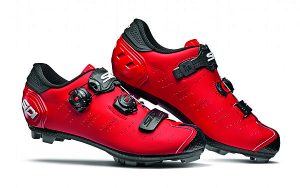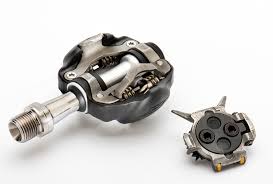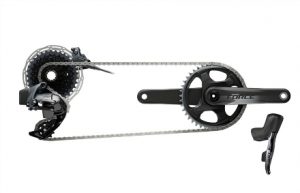Best Bike Equipment Purchases, Part 1
Over the winter, I decided to make an effort to commute by bike with some regularity during the riding season. My commute is about 45 miles round trip, and I live on top of a 800’ climb over the last couple miles. It is a good ride, but takes some time.
I came into the season particularly out of cycling shape. I had done some short rides with a loaded baby trailer up hills to try to make things a little easier on the first commute day. This proved one thing: there is no substitute for base miles. On my first ride to work, I was riding a great new bike (Moots Routt RSL with SRAM’s really nice new AXS components). However, the temperature was in the 30’s and it was wet. Despite the bike, I felt tight and cold on the first mile and I felt the same way on the last. It also became apparent that I had some sit bone reconditioning to do and that starting with 45+ miles in the cold was not likely the best way to do that… Thankfully, the ride home was warmer and much better, but the two mile 800 foot vertical climb at the end of the ride just about buried me.
The ride made a few things apparent.
- I need to start spending time on the trainer in the winter.
- If the type of riding you are doing has changed, your equipment should change with it. Use what makes the most sense for your application. Commuting is not the same as a brisk ride after work.
- No matter how nice a bike you are riding, don’t ignore the details that are pertinent to your use.
With this in mind, I reflected on the equipment that got me through that first ride (which I may not have finished otherwise). It was apparent that I was derelict in a few other aspects of my commuting equipment. The good news is that I like getting new gear as much as anyone and now I needed it…
With this in mind, here is part one of three of my list of the best things I have done for my cycling in recent years. Please note that this list is in no particular order.
New Shoes.
Unlike my road shoes, when it came to my commuting/touring shoes, my shoe situation was a case of me not taking my own advice. 
I started commuting using my old Sidi Dominators this year. When I say “old”, I mean Clinton administration old. I had replaced the straps and buckles through the years and the uppers were still doing pretty well – Sidi makes a great shoe. These shoes had been to three continents with me and had seen a lot. They were also an almost irreplaceable yellow, which likely was a part of why I kept them year after year. I loved them, but had not been paying attention to the reality of their condition.
In ’97 there was no such thing as a carbon sole. The 22 year old nylon sole on my shoes were about as stiff as a flip-flop on the Fourth of July. After the first two rides this year and some less than comfortable feet, I ordered a new pair of shoes (Sidi Dragon 5, this time in red!). What a difference. Pressure points disappeared and lateral stability returned. Well worth the investment.
The lesson? It doesn’t matter what they look like or how much you love your shoes or hate breaking in new ones, get new shoes with some regularity. If Sidi doesn’t fit you well, there are plenty of other great shoes on the market. Get something that works well and keep in mind that custom cycling footbeds wear over time as well and need to be replaced too.
Speedplay SYZR Pedals.
While the Speedplay SYZR pedals were initially marketed by Speedplay as MTB pedals, the Speedplay SYZR are the best gravel pedals I have ever used. In fact, it has become apparent over time  that they are better gravel pedals then they are MTB (where they had a tendency to pre-release at non-optimal times for me).
that they are better gravel pedals then they are MTB (where they had a tendency to pre-release at non-optimal times for me).
Why is the SYZR the best gravel pedal on the market today? Adjustability; control; float range; stability; road pedal like feel; the ability to have leg length differences accommodated for in the pedal body without interfering with the ability to walk. The list goes on… Offering the stable feel of a road pedal platform with the walkability of a touring/MTB pedal, the SYZR is a great pedal system for commuting, gravel riding, touring or even the dedicated pavement rider who wants an inset/walkable shoe.
Electronic Shifting.
I have never counted how many times I shift on the average with mechanical shifting. However, I am 100% certain that it is far less than the number of shifts I make with electronic shifting. Why  does this matter? If there is one thing you can do to help your efficiency and minimize your fatigue, it is to ride at a consistent high cadence. I don’t do this nearly as well with mechanical shifting as electronic. I barely even think about shifting with electronic – if I need another gear (in either direction) to maintain my cadence, it just happens. I’m certain that at the least I’m a smarter rider on electronic shifting.
does this matter? If there is one thing you can do to help your efficiency and minimize your fatigue, it is to ride at a consistent high cadence. I don’t do this nearly as well with mechanical shifting as electronic. I barely even think about shifting with electronic – if I need another gear (in either direction) to maintain my cadence, it just happens. I’m certain that at the least I’m a smarter rider on electronic shifting.
There are other nice features to electronic shifting when it comes to shift quality and maintenance reductions due to the elimination or cables, but the cadence benefit is the one that I appreciate the most as it makes me a better rider than I am without it.

